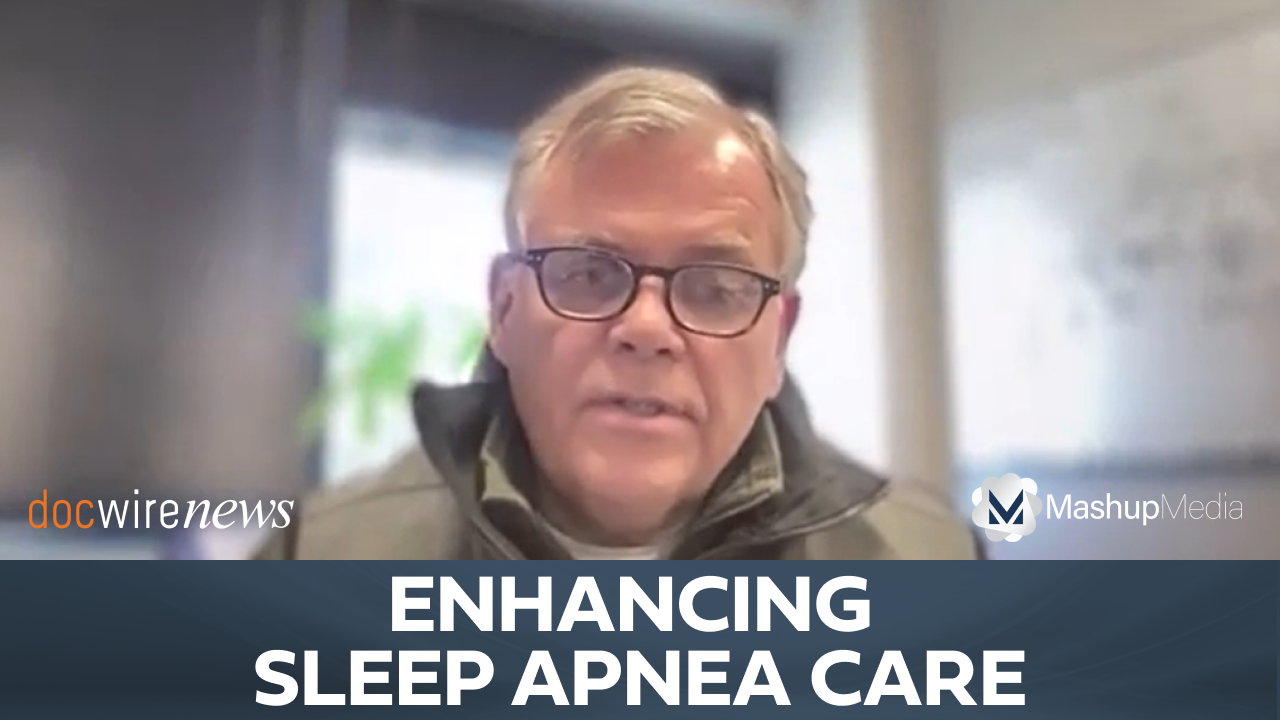Dr. Anne Marie Morse on How to Support Children, Adolescents Living With Narcolepsy
By Anne Marie Morse, DO, Rob Dillard - Last Updated: July 12, 2024Narcolepsy is a chronic condition that has a negative impact on quality of life. In children, this sleep disorder is often misinterpreted as laziness, lack of motivation, behavioral problems, or cognitive difficulties and can have a significant impact on a child’s personal, social, and academic life.
On July 15, Dr. Anne Marie Morse will collaborate with the Society for Women’s Health Research to host a webinar, “Women & Caregiving: Supporting Children with Narcolepsy through School,” which will dispense valuable information about narcolepsy in children.
Dr. Morse joined DocWire News to discuss the challenges of treating children and adolescents with narcolepsy and explain why the webinar is important for parents of children with this burdensome condition. Register now.
What are the main challenges associated with treating children and adolescents with narcolepsy?
One of the main challenges, when we’re talking about the treatment of children and adolescents with narcolepsy, is the fact that they’re not diagnosed. One of the biggest things that we’re expecting is that because this is a pediatric-onset disease, we would see that children are the ones who are coming into clinic. However, we recognize that one of the biggest barriers is this significant delay in diagnosis. Although the most common time that we’re seeing the diagnosis present itself is around 15 to 16 years of age, it’s taking upward of 20 years for some people to actually achieve diagnosis.
Why is this relevant when talking about the child who actually gets diagnosed around the time of their symptom onset? Well, the fortunate part is that you are actually able to intervene at a period of time that is so incredibly integral to the ongoing development and self-identity for the remainder of that person’s existence. When we’re talking about 15 to 16 years of age, I don’t know if you remember being 15 or 16, but I remember for myself, someone who does not live with narcolepsy, that it was a period of not knowing who I was or what I wanted to be. I wondered how I fit in and all of those really critical elements that lead to the identity of who you ultimately are going to be.
Now, if I’m struck down by a condition that is burdened by severe excessive daytime sleepiness, which leaves me marginalized and isolated, academic success is really the smallest component that ends up being affected. You end up with individuals who have no idea how to potentially be the person they have the ability to become. Never mind the fact that social isolation and marginalization can result in bullying, can result in families thinking that they’re on drugs or that there’s something else wrong. Teachers may think that they’re not working hard enough.
This is not even taking into consideration the remainder of the pentad and non-pentad symptoms, including rapid waking, which frequently can be associated with narcolepsy and are going to further compromise and cripple the self-esteem that individuals may have. When we look at the longitudinal effects of individuals with narcolepsy, we see that it carries a very large, not only health care burden, but a socioeconomic burden. Why is that? Because when I’m striking down a child in a critical period of time for them to undergo optimal developmental milestone acquisition, I’m striking down their ability to achieve potential academic success. This translates into lower likelihood of higher education success, lower likelihood of the work productivity that would lead to higher earnings.
A child who’s impacted with narcolepsy is affected by far-reaching things that now you really need to wrangle with. The treatment of narcolepsy in children and adolescents needs to be personalized but holistic. We need to look at not only pharmacologic efforts, but also lifestyle and social and psychological efforts to really treat the whole patient. In addition, it’s not just treating the child, it’s treating the family, the parents, the school districts. We need to make sure that there’s increased awareness, as well as share ways to be supportive and actually affect the changes that lead to optimal success, which is measured by more than just attending school and what grades are being achieved.
On July 15, you will be partnering with the Society for Women’s Health Research to host a webinar called “Women & Caregiving: Supporting Children with Narcolepsy through School.” What insights can women caring for children with narcolepsy gain from this discussion?
I am incredibly privileged to be able to work alongside and with the Society for Women’s Health Research. They never stop trying to evolve and move the edge on how to empower women who not only may be suffering with disease but may be caregivers for others with disease. In this particular effort, we’re focusing on children and adolescents and how parents are able to be advocates for their children. This is going to be a great event because we are able to utilize a variety of different perspectives. I’ll be bringing a new perspective of a treating physician and why we really need to have this personalized approach and how the delays in diagnoses and the treatment options we select can not only impact that child right then and there, but really the implications are lifelong. I get the opportunity to partner with a psychologist who is an expert in school delivery. Those behavioral lifestyle management skills can be utilized in a school setting, either through a 504 plan or an individual education plan.
The other part of the event is going to involve a mother who has a child with narcolepsy, and she’ll be representing Wake Up Narcolepsy. So, we not only get an individual, but also an advocacy organization that has been rooted in advancing how we’re able to deliver care.
You don’t want to miss this event. It is going to provide information that is going to be transformational, not only if you’re a clinician or a patient, but if you’re in a community and you’re recognizing that there are children or adolescents who have features that are consistent with narcolepsy. Excessive daytime sleepiness can look like mood instability, decreasing grades, or withdrawal. Hopefully, this event will lead to increased recognition.
I also hope that it reduces the stigma around children and adolescents who are going through this, as well as help us recognize that it’s not just the child who needs the support, but also the family unit. We need to be able to support mothers and fathers who are trying to provide the optimal care and ensure the delivery of education and resources is fully supported. We have to remember that it’s not just a health care system that takes care of patients, it takes a village. The saying is there for a reason. It’s true.







 © 2025 Mashup Media, LLC, a Formedics Property. All Rights Reserved.
© 2025 Mashup Media, LLC, a Formedics Property. All Rights Reserved.